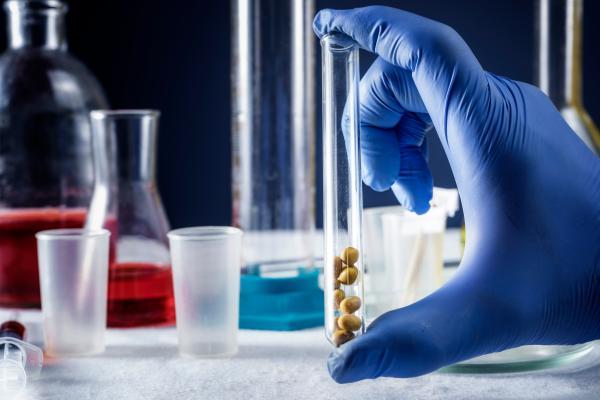
Food Safety Testing
From microorganism, mycotoxin and allergen detection to GMO and animal identification tests, our food safety testing solutions provide the reliable data you need for confident compliance and fast product release.
The Foundation of Food Safety Testing
Effective food safety testing is not a single event, but an integrated process applied at critical points throughout the production chain. This systematic approach aligns with preventive controls frameworks, such as the U.S. FDA's Food Safety Modernization Act (FSMA), by shifting focus from simple final product checks to proactive hazard management. The process begins with verifying the safety of raw materials and continues with in-process monitoring to ensure controls are working as intended.
The core of this program is selecting the right tool for the job. High-precision methods like PCR-based food testing are used for specific pathogen detection, while rapid allergen tests are essential for verifying cleaning effectiveness. In parallel, routine indicator organism testing provides vital data on the overall state of sanitation and process control. Each result contributes to a larger dataset, providing the objective evidence needed for the verification of HACCP plans—a core principle established by the Codex Alimentarius Commission (FAO). This creates a detailed, traceable record that forms the backbone of a compliant and defensible food safety system.
Our solutions are designed for the diverse matrices and environments found across the food industry, including:
- Beef, pork, poultry, and seafood processing
- Dairy products and processing environments
- Fresh and minimally processed produce
- Prepared & frozen foods and confectionary
- Beverage production and bottling facilities
Key Pillars of a Modern Food Safety Program
A successful food safety program is built on several interconnected pillars, each contributing to a culture of prevention and continuous improvement.
Risk Assessment & Sampling Design
A foundational step where potential hazards are identified and a logical, science-based plan is created to monitor them effectively.
- Establishes where, when, and how often to sample based on product and process risks.
- Ensures testing resources are focused on the most critical control points.
Targeted Hazard Detection and Control
Selecting the right method to precisely detect specific hazards, from microbial pathogens and allergens to markers for authenticity and quality.
- Deploy high-specificity methods like real-time PCR for critical pathogen detection, animal identification, and GMO screening & identification.
- Implement ELISA, Lateral Flow, and Chromogenic Reaction assays for robust allergen management programs and mycotoxin screening.
Indicator Organism & Spoilage Trending
Monitoring general microbial populations to gain insight into sanitation effectiveness, process control, and potential product quality issues.
- Provides early warnings of declining hygienic conditions before specific microbial contamination becomes a problem.
- Helps validate cleaning procedures and establish realistic microbiological limits.
Environmental Monitoring Program
A systematic program for testing the processing environment to find and eliminate microbial harborage sites and verify sanitation controls.
- Identifies transient or resident microbes in zones near food contact surfaces (e.g., ATP-verification).
- Verifies that sanitation and facility design are effective at controlling contamination sources.
Data Integrity and Traceability
Implementing systems that ensure all testing data is securely recorded, easily accessible, and connected to specific samples, lots, and locations.
- Creates an audit-ready trail for regulatory inspections and customer inquiries.
- Facilitates trend analysis for proactive data management in food safety.
Validation and SOP Governance
Using officially validated test methods and maintaining clear, consistent Standard Operating Procedures (SOPs) for all testing activities.
- Ensures results are reliable and defensible by using methods with recognized approvals (AOAC, MicroVal, etc., where applicable).
- Promotes consistency and accuracy across different technicians and shifts.
Food Safety Testing Solutions
We provide a comprehensive portfolio of food safety testing solutions designed to fit the specific needs of the food and beverage industry. Our systems are built to create a seamless workflow, from simple sample collection to clear, actionable results. Many methods hold international validations (including AOAC, MicroVal, AFNOR, and NordVal, where applicable).
Not found what you are looking for?






